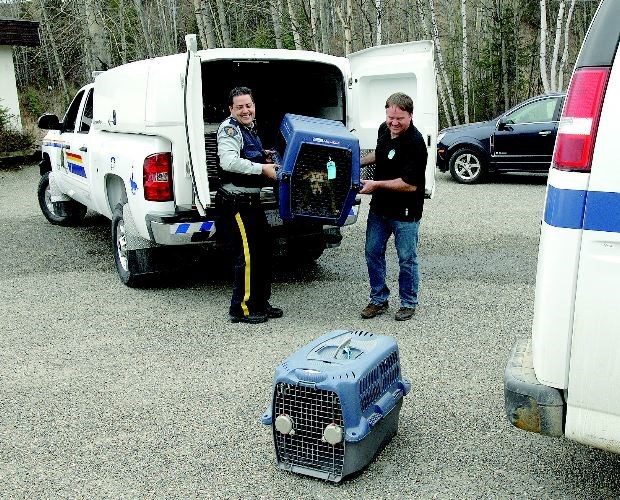The RCMP and SPCA have a pet pipeline into two of the region's most remote communities.
The communities of Tsay Keh and Kwadacha (Fort Ware) have a combined population of about 400 residents. There is also a sizable population of dogs, many of whom had no particular owner.
RCMP Cpl. Aaron Chamberlin is the police commander of the two towns located about 70 kms apart at the northern end of Williston Lake then up the Finlay River some more. He and the three other Mounties there noted that sometimes these unattended dogs would form packs, sometimes they would be ill, some would scavenge food or act territorial, sometimes one or a group would pose a public health risk, and the canine population was only growing.
"Although aggressive dog packs didn't happen often, the potential problem was there and [Chamberlin] needed to find a way to reduce and control the pet problem rather than having to shoot problem animals," said North District RCMP spokeswoman Const. Lesley Smith.
Chamberlin contacted Dr. James Lawson, a senior official with the B.C. SPCA, and was told that a spaying and neutering program would be effective, but the supplies and expertise were not very portable to the towns accessible only by air or rough backcountry road. The closest centre that provided those services was Prince George, seven or eight hours away.
"Anything you can get out, (of the area) we will take," was Lawson's pledge to Chamberlin, and the Mountie wasn't going to let the offer fall flat.
On Wednesday, Chamberlin rolled into the Prince George SPCA driveway with the latest shipment of dogs to be adopted out to homes, or visit the spay-neuter clinic and get any necessary vaccinations before returning home.
Whenever a group of animals gets too big, and it isn't possible to drive them out of Tsay Keh/Kwadacha, Northern Thunderbird Air takes them under their wing. On several occasions NT Air has transported the furry passengers between the remote communities and the Prince George SPCA.
"We have flights in and out of there four days a week," said NT Air manager Bill Hesse. "We agreed to fly the animals in and out as needed, if we had the room, and often we have been able to do it. We're happy to help."
Between 50 and 60 animals have been handled by the program, and Chamberlin said the effects within the two small towns are already noticeable. The more it gets done, the less future demand there will be, he added.
None of it would have been possible, said Smith, without a community buy-in. Dogs are not taken if they are owned, so it takes a lot of ongoing communication with Tsay Keh/Kwadacha residents to know which animals have a home and which are truly on their own, but the public response was strong and it has also improved pet stewardship overall.
"One of the greatest aspects of the program is the small impact it has on police resources compared to the large impact it has on community-police relations," said Smith.
Chamberlin added it has gone so well there that "we're trying to get the word out now to other detachments, because we are not special. This is an issue in small towns all over B.C., all over Canada. The community of Takla is giving this a good look and there is no reason any detachment in a small, remote town couldn't do this. We think we have set an effective example."
The two towns, administrated by the resident First Nations, are also talking now about implementing a municipal licensing system to make pet ownership even more formalized, and further improve pet husbandry and streamline the stray animal issue.
"It really is about building personal relationships and being part of a bigger picture," Chamberlin said.



